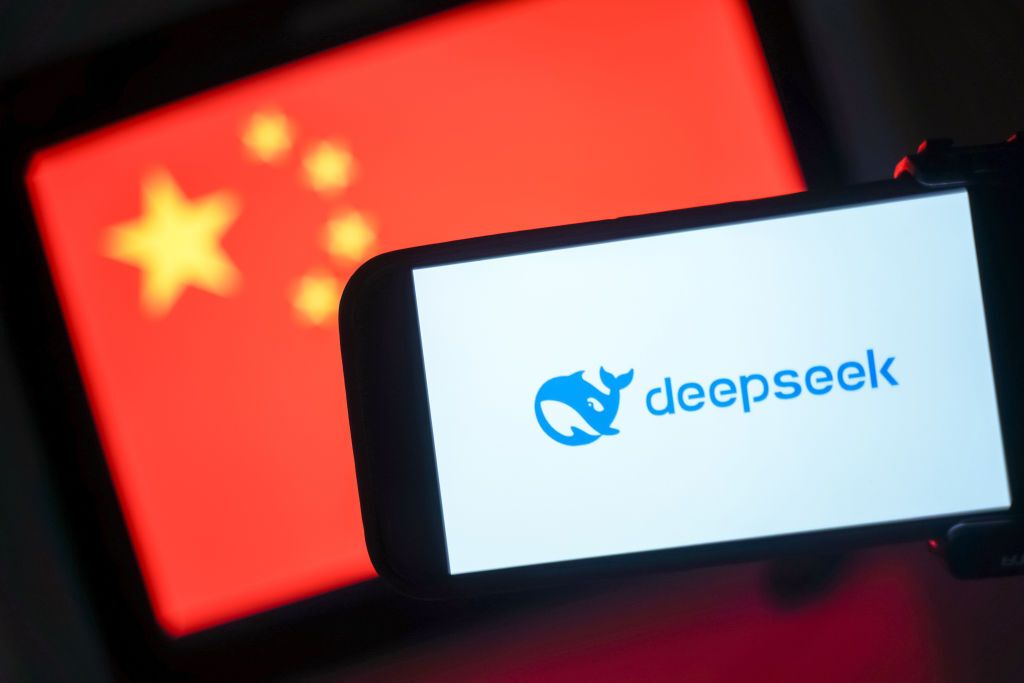Uncategorized
The DeepSeek-R1 Effect and Web3-AI

The artificial intelligence (AI) world was taken by storm a few days ago with the release of DeepSeek-R1, an open-source reasoning model that matches the performance of top foundation models while claiming to have been built using a remarkably low training budget and novel post-training techniques. The release of DeepSeek-R1 not only challenged the conventional wisdom surrounding the scaling laws of foundation models – which traditionally favor massive training budgets – but did so in the most active area of research in the field: reasoning.
The open-weights (as opposed to open-source) nature of the release made the model readily accessible to the AI community, leading to a surge of clones within hours. Moreover, DeepSeek-R1 left its mark on the ongoing AI race between China and the United States, reinforcing what has been increasingly evident: Chinese models are of exceptionally high quality and fully capable of driving innovation with original ideas.
Unlike most advancements in generative AI, which seem to widen the gap between Web2 and Web3 in the realm of foundation models, the release of DeepSeek-R1 carries real implications and presents intriguing opportunities for Web3-AI. To assess these, we must first take a closer look at DeepSeek-R1’s key innovations and differentiators.
Inside DeepSeek-R1
DeepSeek-R1 was the result of introducing incremental innovations into a well-established pretraining framework for foundation models. In broad terms, DeepSeek-R1 follows the same training methodology as most high-profile foundation models. This approach consists of three key steps:
Pretraining: The model is initially pretrained to predict the next word using massive amounts of unlabeled data.
Supervised Fine-Tuning (SFT): This step optimizes the model in two critical areas: following instructions and answering questions.
Alignment with Human Preferences: A final fine-tuning phase is conducted to align the model’s responses with human preferences.
Most major foundation models – including those developed by OpenAI, Google, and Anthropic – adhere to this same general process. At a high level, DeepSeek-R1’s training procedure does not appear significantly different. ButHowever, rather than pretraining a base model from scratch, R1 leveraged the base model of its predecessor, DeepSeek-v3-base, which boasts an impressive 617 billion parameters.
In essence, DeepSeek-R1 is the result of applying SFT to DeepSeek-v3-base with a large-scale reasoning dataset. The real innovation lies in the construction of these reasoning datasets, which are notoriously difficult to build.
First Step: DeepSeek-R1-Zero
One of the most important aspects of DeepSeek-R1 is that the process did not produce just a single model but two. Perhaps the most significant innovation of DeepSeek-R1 was the creation of an intermediate model called R1-Zero, which is specialized in reasoning tasks. This model was trained almost entirely using reinforcement learning, with minimal reliance on labeled data.
Reinforcement learning is a technique in which a model is rewarded for generating correct answers, enabling it to generalize knowledge over time.
R1-Zero is quite impressive, as it was able to match GPT-o1 in reasoning tasks. However, the model struggled with more general tasks such as question-answering and readability. That said, the purpose of R1-Zero was never to create a generalist model but rather to demonstrate it is possible to achieve state-of-the-art reasoning capabilities using reinforcement learning alone – even if the model does not perform well in other areas.
Second-Step: DeepSeek-R1
DeepSeek-R1 was designed to be a general-purpose model that excels at reasoning, meaning it needed to outperform R1-Zero. To achieve this, DeepSeek started once again with its v3 model, but this time, it fine-tuned it on a small reasoning dataset.
As mentioned earlier, reasoning datasets are difficult to produce. This is where R1-Zero played a crucial role. The intermediate model was used to generate a synthetic reasoning dataset, which was then used to fine-tune DeepSeek v3. This process resulted in another intermediate reasoning model, which was subsequently put through an extensive reinforcement learning phase using a dataset of 600,000 samples, also generated by R1-Zero. The final outcome of this process was DeepSeek-R1.
While I have omitted several technical details of the R1 pretraining process, here are the two main takeaways:
R1-Zero demonstrated that it is possible to develop sophisticated reasoning capabilities using basic reinforcement learning. Although R1-Zero was not a strong generalist model, it successfully generated the reasoning data necessary for R1.
R1 expanded the traditional pretraining pipeline used by most foundation models by incorporating R1-Zero into the process. Additionally, it leveraged a significant amount of synthetic reasoning data generated by R1-Zero.
As a result, DeepSeek-R1 emerged as a model that matched the reasoning capabilities of GPT-o1 while being built using a simpler and likely significantly cheaper pretraining process.
Everyone agrees that R1 marks an important milestone in the history of generative AI, one that is likely to reshape the way foundation models are developed. When it comes to Web3, it will be interesting to explore how R1 influences the evolving landscape of Web3-AI.
DeepSeek-R1 and Web3-AI
Until now, Web3 has struggled to establish compelling use cases that clearly add value to the creation and utilization of foundation models. To some extent, the traditional workflow for pretraining foundation models appears to be the antithesis of Web3 architectures. However, despite being in its early stages, the release of DeepSeek-R1 has highlighted several opportunities that could naturally align with Web3-AI architectures.
1) Reinforcement Learning Fine-Tuning Networks
R1-Zero demonstrated that it is possible to develop reasoning models using pure reinforcement learning. From a computational standpoint, reinforcement learning is highly parallelizable, making it well-suited for decentralized networks. Imagine a Web3 network where nodes are compensated for fine-tuning a model on reinforcement learning tasks, each applying different strategies. This approach is far more feasible than other pretraining paradigms that require complex GPU topologies and centralized infrastructure.
2) Synthetic Reasoning Dataset Generation
Another key contribution of DeepSeek-R1 was showcasing the importance of synthetically generated reasoning datasets for cognitive tasks. This process is also well-suited for a decentralized network, where nodes execute dataset generation jobs and are compensated as these datasets are used for pretraining or fine-tuning foundation models. Since this data is synthetically generated, the entire network can be fully automated without human intervention, making it an ideal fit for Web3 architectures.
3) Decentralized Inference for Small Distilled Reasoning Models
DeepSeek-R1 is a massive model with 671 billion parameters. However, almost immediately after its release, a wave of distilled reasoning models emerged, ranging from 1.5 to 70 billion parameters. These smaller models are significantly more practical for inference in decentralized networks. For example, a 1.5B–2B distilled R1 model could be embedded in a DeFi protocol or deployed within nodes of a DePIN network. More simply, we are likely to see the rise of cost-effective reasoning inference endpoints powered by decentralized compute networks. Reasoning is one domain where the performance gap between small and large models is narrowing, creating a unique opportunity for Web3 to efficiently leverage these distilled models in decentralized inference settings.
4) Reasoning Data Provenance
One of the defining features of reasoning models is their ability to generate reasoning traces for a given task. DeepSeek-R1 makes these traces available as part of its inference output, reinforcing the importance of provenance and traceability for reasoning tasks. The internet today primarily operates on outputs, with little visibility into the intermediate steps that lead to those results. Web3 presents an opportunity to track and verify each reasoning step, potentially creating a «new internet of reasoning» where transparency and verifiability become the norm.
Web3-AI Has a Chance in the Post-R1 Reasoning Era
The release of DeepSeek-R1 has marked a turning point in the evolution of generative AI. By combining clever innovations with established pretraining paradigms, it has challenged traditional AI workflows and opened a new era in reasoning-focused AI. Unlike many previous foundation models, DeepSeek-R1 introduces elements that bring generative AI closer to Web3.
Key aspects of R1 – synthetic reasoning datasets, more parallelizable training and the growing need for traceability – align naturally with Web3 principles. While Web3-AI has struggled to gain meaningful traction, this new post-R1 reasoning era may present the best opportunity yet for Web3 to play a more significant role in the future of AI.
Uncategorized
Elon Musk vs. the regulators
Welcome back to TechCrunch Mobility, your hub for all things “future of transportation.”
Uncategorized
Nvidia’s AI empire: A look at its top startup investments
Over the last two years, Nvidia has used its ballooning fortunes to invest in over 100 AI startups. Here are the giant semiconductor’s largest investments.
Uncategorized
Dating app Cerca will show how Gen Z really dates at TechCrunch Disrupt 2025
Cerca is a dating app that sets users up with mutual friends.
-

 Business12 месяцев ago
Business12 месяцев ago3 Ways to make your business presentation more relatable
-

 Fashion12 месяцев ago
Fashion12 месяцев agoAccording to Dior Couture, this taboo fashion accessory is back
-

 Entertainment12 месяцев ago
Entertainment12 месяцев ago10 Artists who retired from music and made a comeback
-

 Entertainment12 месяцев ago
Entertainment12 месяцев ago\’Better Call Saul\’ has been renewed for a fourth season
-

 Entertainment12 месяцев ago
Entertainment12 месяцев agoNew Season 8 Walking Dead trailer flashes forward in time
-

 Business12 месяцев ago
Business12 месяцев ago15 Habits that could be hurting your business relationships
-

 Entertainment12 месяцев ago
Entertainment12 месяцев agoMeet Superman\’s grandfather in new trailer for Krypton
-

 Uncategorized4 месяца ago
Uncategorized4 месяца agoRobinhood Launches Micro Bitcoin, Solana and XRP Futures Contracts


